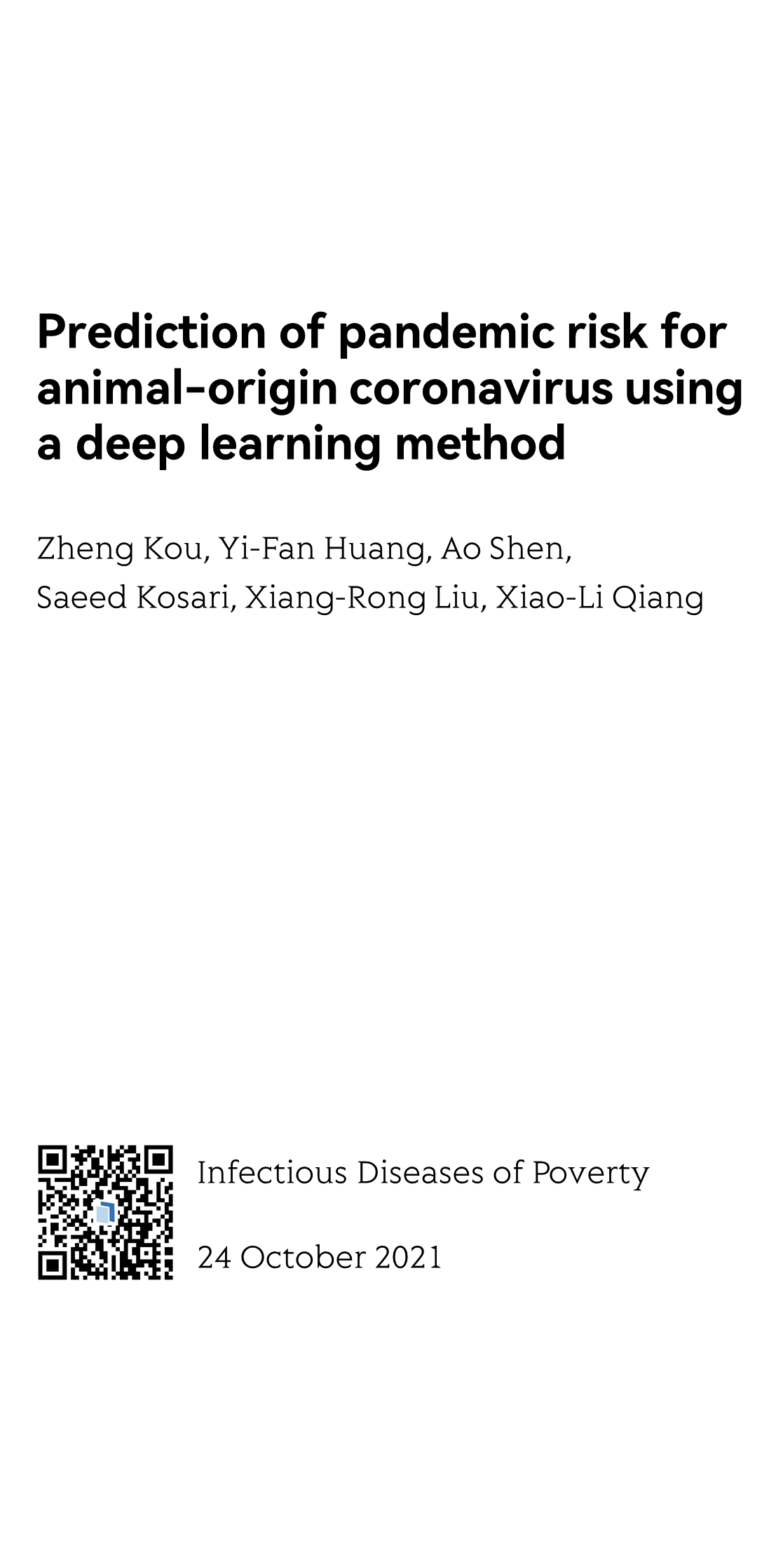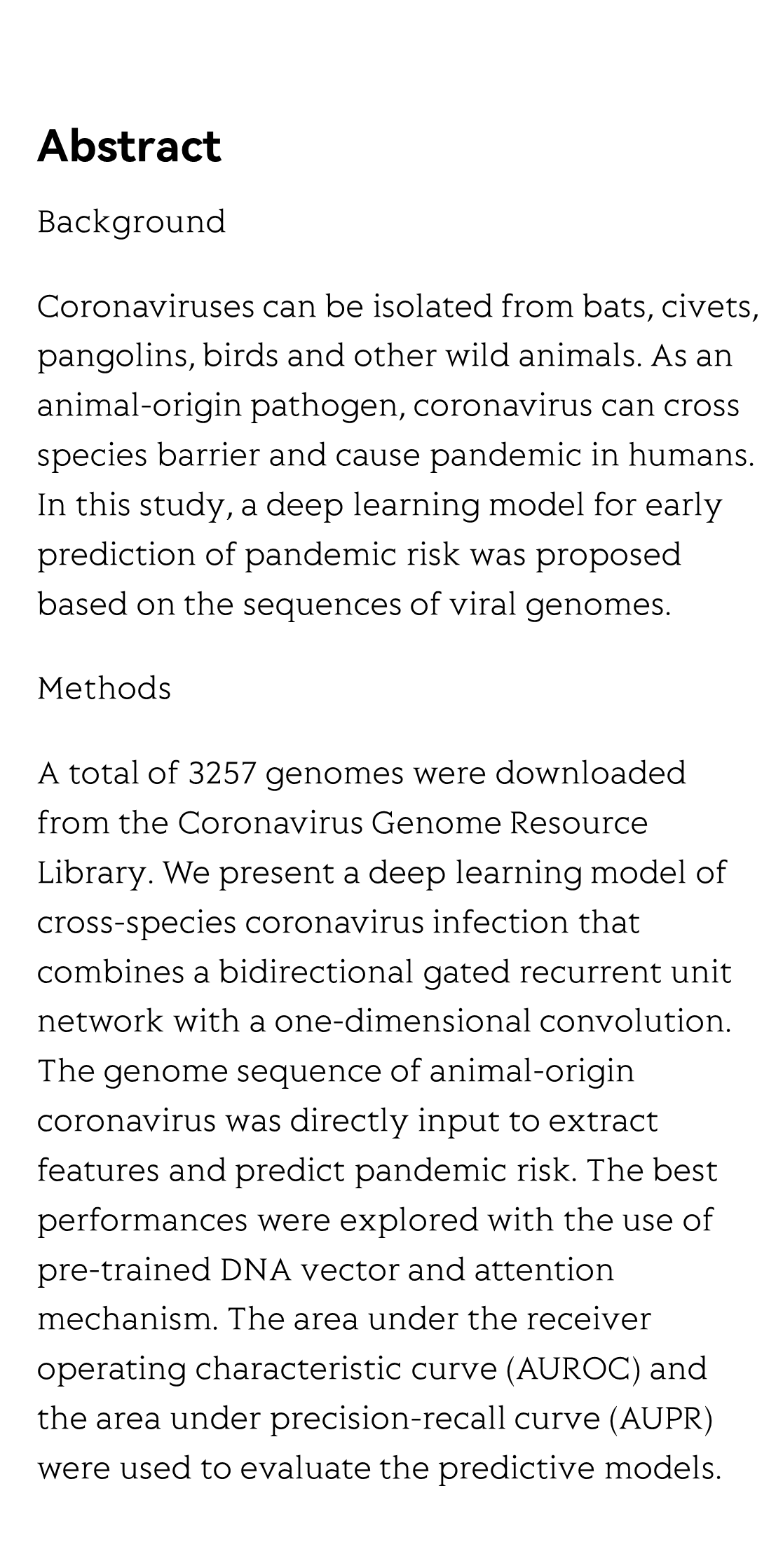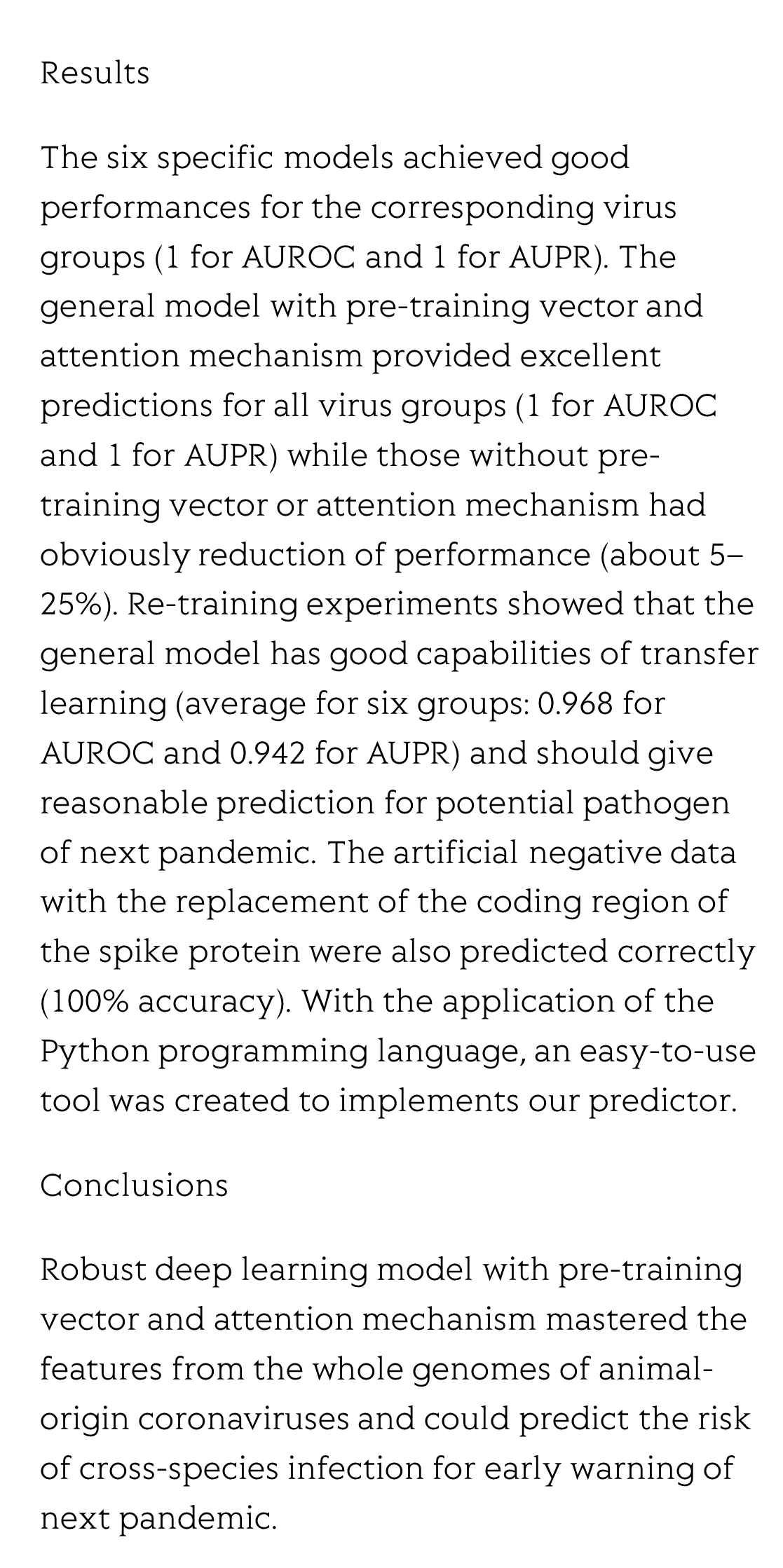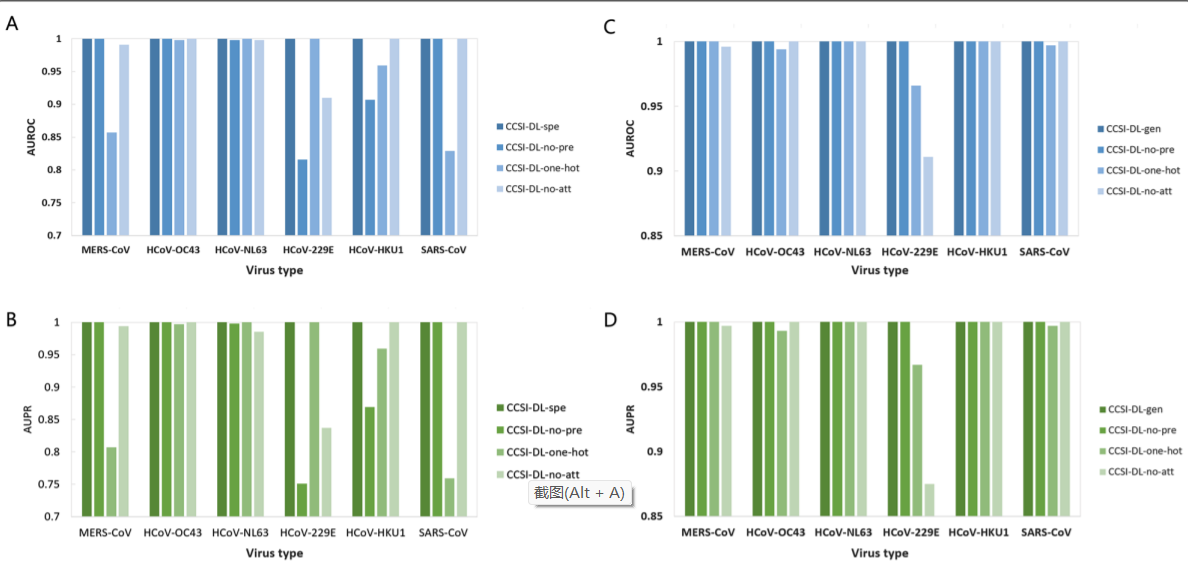(Peer-Reviewed) Prediction of pandemic risk for animal-origin coronavirus using a deep learning method
Zheng Kou 寇铮 ¹, Yi-Fan Huang ¹, Ao Shen ¹, Saeed Kosari ¹, Xiang-Rong Liu 刘向荣 ², Xiao-Li Qiang 强小利 ¹
¹ Institute of Computing Science and Technology, Guangzhou University, Guangzhou, 510006, China
中国 广州 广州大学计算科技研究院
² Department of Computer Science, Xiamen University, Xiamen, 361005, China
中国 厦门 厦门大学计算机科学系
Background
Coronaviruses can be isolated from bats, civets, pangolins, birds and other wild animals. As an animal-origin pathogen, coronavirus can cross species barrier and cause pandemic in humans. In this study, a deep learning model for early prediction of pandemic risk was proposed based on the sequences of viral genomes.
Methods
A total of 3257 genomes were downloaded from the Coronavirus Genome Resource Library. We present a deep learning model of cross-species coronavirus infection that combines a bidirectional gated recurrent unit network with a one-dimensional convolution. The genome sequence of animal-origin coronavirus was directly input to extract features and predict pandemic risk. The best performances were explored with the use of pre-trained DNA vector and attention mechanism. The area under the receiver operating characteristic curve (AUROC) and the area under precision-recall curve (AUPR) were used to evaluate the predictive models.
Results
The six specific models achieved good performances for the corresponding virus groups (1 for AUROC and 1 for AUPR). The general model with pre-training vector and attention mechanism provided excellent predictions for all virus groups (1 for AUROC and 1 for AUPR) while those without pre-training vector or attention mechanism had obviously reduction of performance (about 5–25%). Re-training experiments showed that the general model has good capabilities of transfer learning (average for six groups: 0.968 for AUROC and 0.942 for AUPR) and should give reasonable prediction for potential pathogen of next pandemic. The artificial negative data with the replacement of the coding region of the spike protein were also predicted correctly (100% accuracy). With the application of the Python programming language, an easy-to-use tool was created to implements our predictor.
Conclusions
Robust deep learning model with pre-training vector and attention mechanism mastered the features from the whole genomes of animal-origin coronaviruses and could predict the risk of cross-species infection for early warning of next pandemic.
Embedded solar adaptive optics telescope: achieving compact integration for high-efficiency solar observations
Naiting Gu, Hao Chen, Ao Tang, Xinlong Fan, Carlos Quintero Noda, Yawei Xiao, Libo Zhong, Xiaosong Wu, Zhenyu Zhang, Yanrong Yang, Zao Yi, Xiaohu Wu, Linhai Huang, Changhui Rao
Opto-Electronic Advances
2025-05-27
Wearable photonic smart wristband for cardiorespiratory function assessment and biometric identification
Wenbo Li, Yukun Long, Yingyin Yan, Kun Xiao, Zhuo Wang, Di Zheng, Arnaldo Leal-Junior, Santosh Kumar, Beatriz Ortega, Carlos Marques, Xiaoli Li, Rui Min
Opto-Electronic Advances
2025-05-27
Integrated photonic polarizers with 2D reduced graphene oxide
Junkai Hu, Jiayang Wu, Di Jin, Wenbo Liu, Yuning Zhang, Yunyi Yang, Linnan Jia, Yijun Wang, Duan Huang, Baohua Jia, David J. Moss
Opto-Electronic Science
2025-05-22
Structural color: an emerging nanophotonic strategy for multicolor and functionalized applications
Wenhao Wang, Long Wang, Qianqian Fu, Wang Zhang, Liuying Wang, Gu Liu, Youju Huang, Jie Huang, Haoyuan Zhang, Fuqiang Guo, Xiaohu Wu
Opto-Electronic Science
2025-04-25







